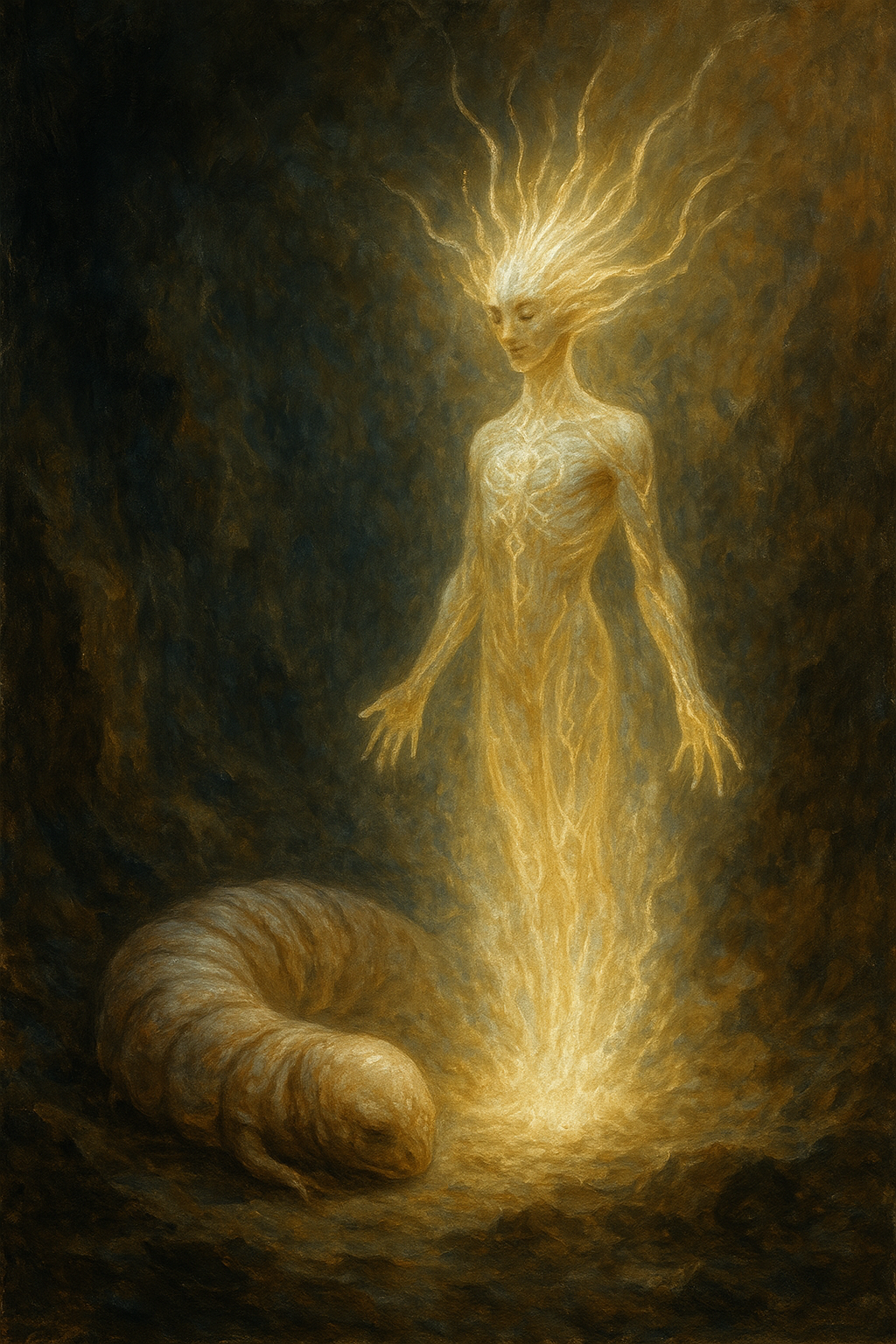Thryxil
“Beneath stone and silence, they wait—not for time, but for stars.”
The Thryxil are a rare, metamorphic species native to the deep crust caverns beneath the Riftlands. In their early form, they resemble eyeless, wormlike creatures with soft exoskin and rudimentary social instincts. But upon exposure to unfiltered celestial light—especially from the Rift moon Tharaxis—they undergo a complete transformation: erupting into bipedal, bioluminescent beings of intelligence and grace.
Their emergence is rare, often mythologized by deep-folk and frontier mages alike. Imperial classification debates whether the post-metamorphosis Thryxil constitute the same species or represent a magical divergence.
Basic Information
Anatomy
Dormant Form:
- Length: ~1.2 meters
- Segmented exoskin with mineral absorption pores
- No eyes; tactile antennae and echo-sensitive ribs
Awakened Form:
- Height: ~2 meters
- Thin-limbed and upright, with translucent skin glowing with internal runes
- Complex vocal organs produce harmonic language
- Cranial filaments resemble radiant plumes
Genetics and Reproduction
Asexual in larval form (splitting via fission). Reproductive method post-metamorphosis is unknown—no “young” Thryxil Lux have been observed.
Growth Rate & Stages
- Dormant for centuries unless exposed to celestial light
- Metamorphosis occurs within 3 days of exposure
- Newly awakened Thryxil emerge with fully formed cognitive ability, suggesting memory transfer or emergent sapience
Ecology and Habitats
- Subterranean fissures rich in Riftstone
- Prefer mineral-heavy, moist, echo-dense zones
- Avoid natural caverns with surface skylight
Dietary Needs and Habits
- Dormant: Mineral osmosis—absorbing nutrients from rock and fungi
- Awakened: Unknown; presumed to convert light or draw from deep-root aether
Biological Cycle
Largely static in larval form. Metamorphosis is not seasonal but tied to light exposure—particularly from celestial sources such as Tharaxis.
Behaviour
- Dormant Thryxil form tight clusters, sharing warmth and echo-space. Non-aggressive.
- Awakened Thryxil demonstrate high logic, curiosity, and reluctance to harm. They emit mournful light songs when isolated.
Additional Information
Social Structure
Dormant: hive-nest instinct.
Awakened: solitary or dyadic pairs
Uses, Products & Exploitation
None sanctioned. Black-market “Thryxil Cradle Resin” is said to prolong mage life, extracted unethically from cocoon fragments.
Average Intelligence
Pre-sapient (Nullus), high intellect (Lux)
Perception and Sensory Capabilities
- Dormant: Vibration and mineral-echo sensitivity
- Awakened: Bioluminescent pulses as language; high-frequency hearing; presumed aetheric empathy
Symbiotic and Parasitic organisms
Glowspore Mycelia—used to “mark” celestial-safe caverns
Pale amber, opaline shimmer (Lux)




Comments